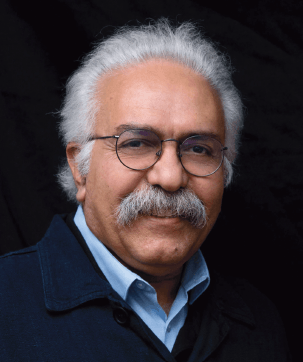
It would appear a useful thing to familiarize yourself with the set of approaches and rules of ‘criminology’, and consider the early history of Islam in this respect as a ‘scene of the crime,’ given that every action may leave a trace that must be examined, and the ‘archaeological discoveries’ linked up with each other, as part of the effort to lay your hands on what may get you closer to the facts.
BY JADOU JIBRIL
THIS IS THE ATTEMPT to form a picture of what took place. Thus, in addition to the methodologies which scientific historiography provides to the researcher, it may also be useful to have recourse to what criminological science can offer.
One youth, in conversation, insisted to me that when he read a number of academic researches related to the early history of Islam, and which were supported by evidence and clues, he faced questions that had not crossed his mind before:
“When I started to have doubts about tampering taking place in early Islamic history I considered that if this were true it would be tantamount to a criminal act, not only against Muslims (especially those who truly believe) but also against all mankind. And if I were to take this criminal act against ‘the original Islam’ as my starting point, then it is incumbent upon me to decode the clues left by this act and attempt to identify its perpetrators – how did they did it and what arguments and clues do we have to rely upon?”
Anyone who examines the first centuries of the early history of Islam constantly comes across the influence of two events:
– the process of distilling and completing the Qur’an – the Mushaf – along with the recording of the hadith;
– sustained periods of violence and bloody internal conflict.
There were a number of conflicts and battles that the Prophet fought, there was the violence that followed his death and the ‘wars of apostasy’ during the era of Abu Bakr, the assassination of the Rightly Guided caliphs, the bloody conflicts of the Umayyad era, the ‘Abbasids’ revolt against the Umayyads, the killing of the Shi’ites. After all of this we have the establishment of the of the final edition of the Qur’an – the official mushaf – during the ‘Abbasid era.
Muslims are still very remiss at clearing their heritage of the detritus of myths and unpalatable to a healthy mind
According to the scholar Mohammad Ali Amir-Moezzi, one of the things that researchers did not pay enough attention to was how the Shi’ite heritage and its authorities had been neglected, in that research was often limited to the Sunni Islamic heritage. He noted that combining these two ‘historical’ perspectives from a neutral standpoint, and for a purely scientific purpose, would be an effective way to explain a number of matters, and to correct what has been distorted or manipulated by either party.
There is a paradox that continues to preoccupy the minds of many: in the final analysis, power finally devolved to the hands of those who fought Islam and who continued to fight it right up to the last moment, that is, until they were compelled to convert to Islam – especially the Umayyads (the Banu ‘Abd Shams)[1]. So in this regard a question arises: Did the Islam of the era of the Prophet undergo distortion or change at their hands after a short historical interval – less than half a century – between 610 AD and the death of the third caliph ‘Uthman, so that it became a ‘political Islam?
How are we to deal with this?
According to the German orientalist Stefan Wild, the field of research on the early history of Islam has witnessed a cumulative wave of activity over a relatively short time,
as if this history was some black box whose keys many claimed to possess, each of them with their own type of key.
All rulings, doctrines and laws that have remained in place for fourteen centuries date back to this early period of Islam, a period that is shrouded in mist. The beliefs and doctrines of the Muslims were formed after the death of the Prophet, and herein lies the importance of uncovering and shedding light on this period. We should note that this task became more difficult with the accumulation, over centuries, of challenges in the struggle for power and influence. This prompted some to fabricate evidence and documents to legitimize newly won control after any victory in these conflicts. Thus, layers of fog have built up as facts became twisted or distorted. It is for this reason that many researchers describe the early history of Islam as ‘the black hole.

Suggested Reading
Some of them argue that it we will have to reconstruct the early history of Islam in view of what appears to have been manipulated. We know that some Muslim thinkers acknowledged this, but only from another point of view, the point of the ‘enemies of Islam and Muslims’. For example, in his book Under the Shade of the Qur’an Sayyid Qutb states:
The enemies of this religion of Islam – and at their forefront the Jews – employed their four thousand or more years’ experience of plotting against the religion of God and were able to do many things … they were able to trample over the Sunna of the Messenger of God and the history of the Muslim nation, and were able to falsify events and infiltrate the body of the Muslim community, playing roles that they were unable to perform while traveling.
This constitutes a half-confession, that Islamic history must be scrutinized and reconstructed, but not from the point of view of something akin to what its enemies preferred, but rather – and this is the most important – because of what the Muslims themselves did and what they concealed and what they intentionally ignored or omitted ‘for the sake of Jacob’s soul’.
But does this mean rejecting the Islamic heritage altogether?
Despite all the difficulties, this heritage contains much that may help shed light on the early period of Islam. But it can only be achieved by acknowledging the need to question this legacy and scrutinize it, so that we may shed some light on its shadowy, ambiguous areas. a
Muslims are still very remiss at clearing their heritage of the detritus of myths and bizarre and histrionic tales that are not palatable to a healthy mind. Yet some of the guardians of the structure of Islamic heritage continue to cite them, intent on disdaining the minds of current generations.
[1] In the pre-Islamic period the Umayyads (descendants from Umayya ‘Abd al-Shams) were a prominent clan of the Meccan tribe of Quraysh. Despite their staunch opposition to the prophet Muhammad the Umayyads embraced Islam just before the latter’s death in 632.
Read Part 1 of this essay here


